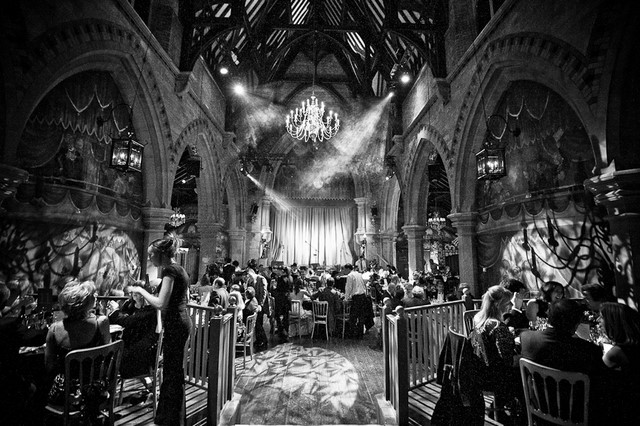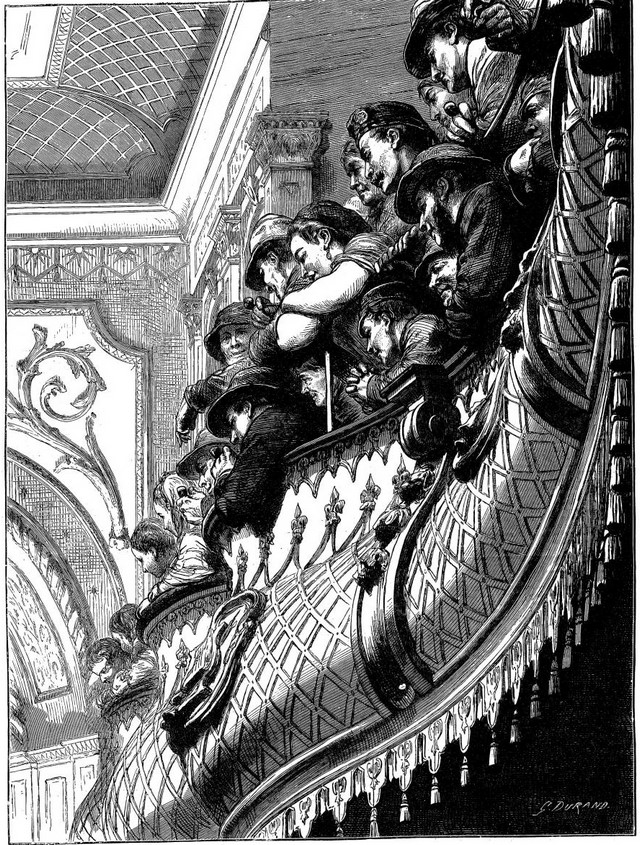Music Hall is a form of entertainment that emerged when the British working classes came together in the rapidly growing Victorian towns and cities across Britain. In its heyday, there were more than three hundred music halls in London alone.
Evolving from the tavern culture, Victorian music halls offered food and drink and a series of up to a dozen “turns”, which included singers and dancers, comedians and impersonators and the “speciality acts”, jugglers, trick cyclists, magic acts, escape acts, animal acts and more.
The songs reflected the general fears and woes of the working classes and were based on the often dismal conditions of every day life. The humour revolved around the issues of the day – politics, poverty, work, love and marriage, even death and war. The audiences were raucous and rowdy, joining in with the performances. They cheered on their favourites and booed off anyone they didn’t like. Although the music halls attracted audiences from all classes and persuasions, George Bernard Shaw and T S Elliot being notable fans, music halls were the people’s theatre.
Evolving as it did without the influence of radio, television or even the gramophone, it is the only form of mass entertainment that could be said to be uniquely British. While the music halls themselves started to disappear, the culture of music hall was embedded in the national psyche and formed the basis of all that was to come. Said to have influenced artists as diverse as the Beatles and the Sex Pistols and the basis of so much popular entertainment, music hall still emerges in its pure form in variety shows, stand-up and such TV programmes as Britain’s Got Talent.
Brick Lane Music Hall keeps the tradition alive, offering food and drink accompanied by entertainment, where the songs are familiar and the humour topical, often irreverent, and audience participation is greatly encouraged.

